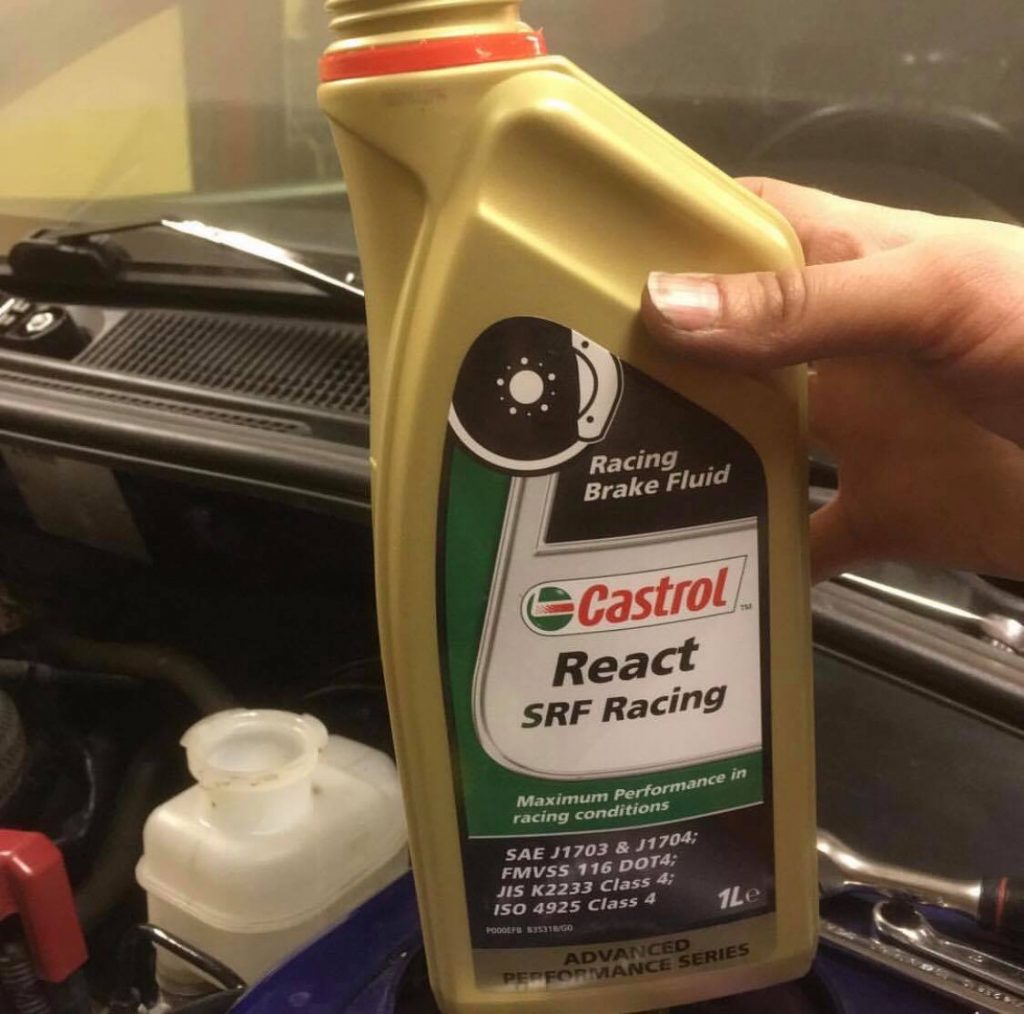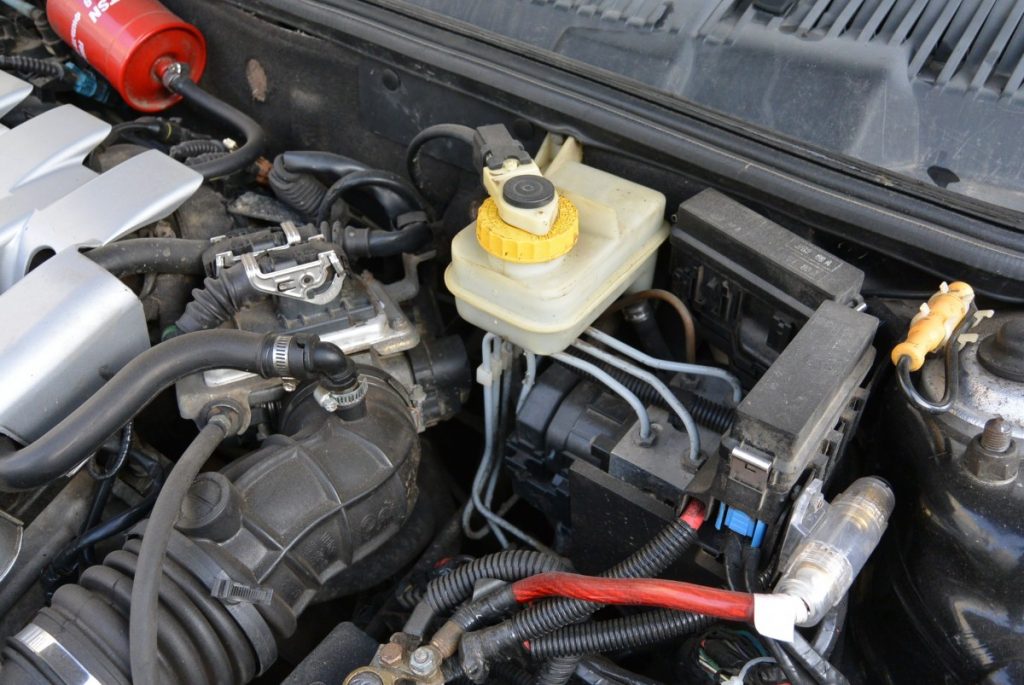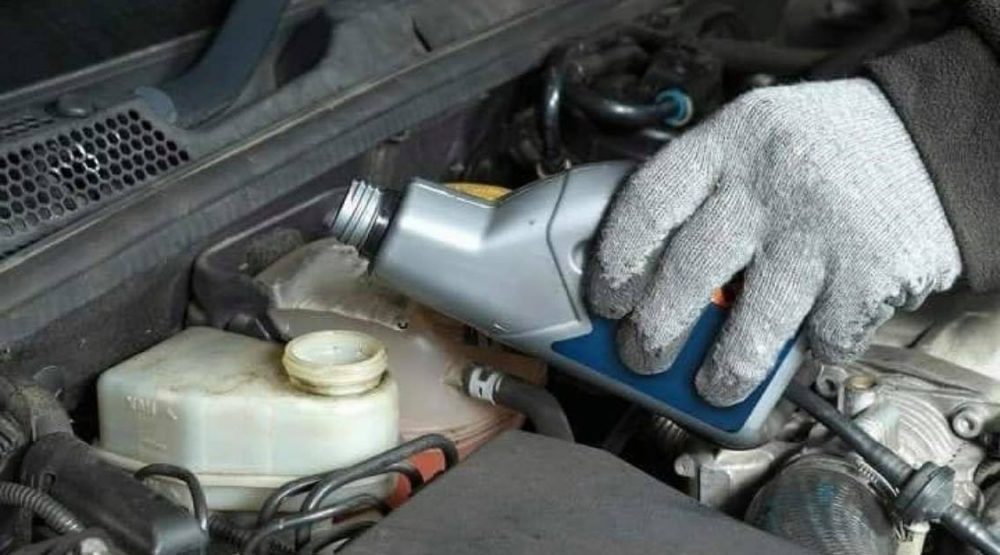Brake fluid can often be the most neglected component of a vehicle and this can reduce the performance of your brakes. The fluid transfers the force from the brake pedal to the wheel hub and it plays a crucial role in your braking system.
The best brake fluid is the Castrol 12509 Fluid, which has a low moisture formula that exceeds both DOT 3 and DOT 4 specification for maximum braking performance.
Brake fluids are classified by both their “Dry Boiling Point” and “Wet Boiling Point” as well as their DOT (Department of Transportation) rating, which usually consists of DOT 3, DOT 4, DOT5 and a few other less common ratings.
Table of Contents
Best Dot 3, Dot 4 & Dot 5 Brake Fluid
| Brake Fluid | Specification | Boiling Point |
|---|---|---|
| Castrol 12509 | DOT 4 | 536 Degrees Fahrenheit |
| Motul RBF 600 | DOT 4 | 594 Degrees Fahrenheit |
| Prestone AS400 | DOT 3 | 460 Degrees Fahrenheit |
| Niteo Motor Medic | DOT 5 | 500 Degrees Fahrenheit |
| Lucas Oil 10826 | DOT 3 | 401 Degrees Fahrenheit |
Brake fluid is poured into the car via the reservoir that is usually placed near the mast cylinder. From this reservoir, you will be able to check the color of the fluid and if it is fairly dark, you should look into replacing it as soon as possible.
The usage of your car will be an important factor on the choice of the brake fluid. For example, if you race your car on the track, you will want a brake fluid with a far greater boiling point to reduce the chances of brake fade.
It is recommended that you replace your brake fluid every 20,000 to 30,000 miles but this may be far less depending upon the cars brake usage. Below is a list of the best brake fluids that consist of DOT 3, DOT 4 and DOT 5 ratings.
Castrol 12509 Dot 4 Brake Fluid
Castrol is a reputable brand in the motor oil industry and the 12509 brake fluid is highly rated worldwide. It is a synthetic brake fluid that exceeds both DOT 3 and DOT 4 standards for optimum braking performance.
Features of the Castrol 12509 Dot 4 Brake Fluid include:
- DOT 4 specification
- Low moisture activity formula
- Clear to light amber fluid color
- Low cost bulk buy option
- 536 degrees Fahrenheit boiling point
Castrol 12509 is suitable for all ABS systems, hydraulic drum and disc braking system that require DOT 3 or DOT 4 fluid. Overall, it is the best brake fluid available you have the reputable backing of the Castrol brand for peace of mind. When purchased in bulk, it also offers excellent value for money when compared alternatives.
Check it OutMotul RBF 600 Racing Brake Fluid
By far the most popular brake fluid for those that require racing brake fluid is the Motul RBF 600. It has been designed to specifically handle high temperatures from racing actuated brakes such as steel or carbon and clutch systems.
In terms of the features of the Motul RBF 600, they include:
- DOT 4 specification
- Non-silicone synthetic formula
- Excellent aerodynamic performance
- High boiling point at 594 degrees Fahrenheit
- High wet boiling point at 401 degrees Fahrenheit
- Exceeds both DOT 5.1 and DOT 3 standards
You may expect this brake fluid to be a higher DOT rating but it is only DOT 4. However, it is race derived and far exceed both DOT 5.1 and DOT 3 standards and also work perfectly with normal road use. However, for track use, this is the best racing brake fluid that you can buy for the money.
Check it OutPrestone AS400 DOT 3 Brake Fluid
For those that require a DOT 3 brake fluid, the Prestone AS400 is the best option. The DOT 3 specification is the usual brake fluid requirement for most budget commuter cars and not the performance vehicle alternative.
In terms of the features of the Prestone AS400 DOT 3 brake fluid, they includes:
- DOT 3 specification
- Suitable for ABS, disc and drum braking systems
- Formula contains a mix of synthetic polyglycol ethers
- 460 degrees Fahrenheit boiling point
- Designed for the average car
Overall, the Prestone AS400 is the best DOT 3 brake fluid that offers excellent value for money. The Prestone brand is also very reputable in both the automotive and marine industry for their lubrication. Therefore, you can trust this brake fluid to provide consistent performance for years to come.
Check it OutNiteo Motor Medic DOT 5 Brake Fluid
DOT 5 brake fluid is one of the highest brake fluid specifications available and the Niteo Motor Medic is one of the most popular. It has been developed to withstand long term braking performance under both high and low operating temperatures.
Features of the Niteo Motor Medic DOT 5 Brake Fluid include:
- DOT 5 specification
- Does not absorb moisture
- Silicone formula
- 500 degrees Fahrenheit dry boiling point
Replacing your brake fluid can be a messy job and if you have a vintage classic car, the last thing you want is any paint damage. The Niteo Motor Medic formula will not harm your paintwork in anyway whatsoever, which is a very desirable feature. Overall, it is the best DOT 5 brake fluid and is a fraction of the cost compared to other DOT 5 alternatives that are available.
Check it OutLucas Oil 10826 Brake Fluid
For those that are on a budget, the Lucas Oil 10826 is an excellent affordable option. The formula consists of a high quality blend of polyethylene glycol ethers and additives that is compatible with all brake system rubber components.
In terms of the features of the Lucas Oil 10826, it includes:
- DOT 3 specification
- Prevents corrosion and provides excellent lubricity
- Compatible with other fluids
- Meets No. 116 and SAE J1703 specifications
- Suitable for both disc and drum brake systems
- 401 degrees Fahrenheit boiling point
Overall, it is a cheap synthetic brake fluid that can be purchased in 12 or 32 ounce bottles for ease of use. Lucas Oil is a reputable brand in the US and you can rest assure that it will perform to the highest of standards.
Check it OutBrake Fluid Buying Guide
The purpose of brake fluid is to move various components of the vehicles braking system via the transfer of brake fluid from the brake pedal to the wheel hubs. It has a fairly long life span between 20,000 to 30,000 miles but it is often neglected.
The majority of people will replace the fluid at the same time as the replacement of their brake rotors. However, if the fluid is heavily used and old, you may not feel the full effects of the rotor change.
To help you make an informed decision, we have produced a detailed buying guide that discusses the background and factors to consider regarding brake fluids.

DOT Specification
On every bottle of brake fluid you find, you will notice that there will be a DOT rating on each. It stands for the Department of Transportation, which is a set of regulations for brake fluids and is a measure of their performance. In general, the higher the DOT specification, the more resistant the brake fluid is to the effects of heat and moisture. Below is a table of each DOT specification:
| Rating | Dry Boiling Point | Wet Boiling Point |
|---|---|---|
| DOT 3 | 205 °C (401 °F) | 140 °C (284 °F) |
| DOT 4 | 230 °C (446 °F) | 155 °C (311 °F) |
| DOT 5 | 260 °C (500 °F) | 180 °C (356 °F) |
Table from Standard No. 116
What DOT Rating For My Car?
The obvious answer is to check your owners manual but there are many other factors to consider. For example, if you intend on taking your vehicle out on the track, you will require a brake fluid that is more resistant to heat.
Just like the brake pads, the fluid will heat up under heavy usage and it can cause brake fading with the incorrect DOT specification.
DOT brake fluids are backwards compatible in most cases and this will mean they will exceed in the lower rated brake fluids. For example, you may be able to use a DOT 4 fluid within a DOT 3 braking system such as the Castrol recommendation within this article. However, adding a DOT 3 fluid within a DOT 4 braking system will cause issues with your braking system.
You can in some cases mix the brake fluid but this is bad practice. You will not want to contaminate the fluid when you have gone to the effort of using a brake bleeder to remove all the existing fluid.
Water Absorption
Brake fluid absorbs water in order to prevent corrosion from within the braking system. However, in the process, the fluid loses its performance overtime and this is when the brake fluid will need to be replaced. There are of course fluids that do not absorb water but this will then cause moisture to sink to low spots in the brake system, which could potential cause corrosion.
Air in the System
One of most common ways air gets into the system is during the brake bleeding process. You can have the best brake bleeder but if you do not fully bleed the system, air can stay in the system and cause issues. However, if you own an older car, worn seals and components can also allow air to enter the system.

When To Replace Your Brake Fluid
Brake fluid is stored within a sealed system and can survive for years without issues. However, it does become contaminated by water (as discussed above) and this will usually cause the fluid to turn a dark color. This can be seen in the reservoir, which is usually located near the master cylinder if you check under the hood. If you spot dirt fluid, we highly recommend changing the brake fluid as soon as possible.
Some car manufacturers say that you must change your brake fluid every 20,000 miles whereas others can last up to 50,000 miles. It is strongly recommended to check your cars manual to be sure. However, a visual inspection is the best way to see whether you require a fluid change.
Unlike the more expensive transmission fluid, replacing the brake fluid is far cheaper and the process is far easier. Therefore its worthwhile spending the small amount extra for a higher quality fluid.
Conclusion
Whether you have a commuter vehicle or use your car on the track, brake fluid is a crucial component of your braking system that must not be ignored. It is relatively cheap to purchase and if you do not want to do it yourself, a mechanic will charge fairly little for labor.
All of our recommendations cover the main DOT specifications (3, 4 and 5) that are suited to a range of driving applications. Without using the correct DOT specification for your car, your braking system may suffer from corrosion or lack of performance in the form of brake fading. Therefore it is crucial that you choose the correct DOT specification for your vehicle.






